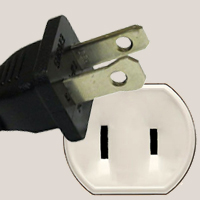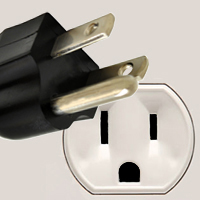Latin America Regulatory Compliance Group
Type Approvals for Latin America and the Caribbean
Latin America Regulatory Compliance GroupLARCG COVERS MEXICO
LARCG COVERS LATAM
Mexico Type Approval Requirements:
What’s in a NOM?
For a product to be manufactured, imported, or sold in Mexico, it must first be certified as compliant with the relevant government standard, known as a NOM (“Norma Official Mexicana”). NOMs are numbered according to the activities and products they cover: NOM-003, NOM-192, etc.
Here’s a quick look at some NOMs covering electrical and electronic equipment. Contact us for more information, including approval timelines, product testing, and need for samples (which vary from project to project).
- NOM-003-SCFI-2014— covers electrical appliances. Required testing generally falls under NMX-J-508-ANCE-2010 or NMX-J-005-ANCE-2015. Products covered include: power strips, plugs, light switches and some fixtures, and limit switches. The type of product determines the labeling requirements.
- NOM-024 — relates to packaging and labeling of products being imported and that packaging, labeling, user manual, and warranty (in Spanish) are in compliance with the regulation
- NOM-192 — establishes the specifications that television sets and decoders must comply with in order to be sold in Mexico
- NOM-196 — applies to all terminal equipment that is connected or interconnected through wired access to a public telecommunications network. If such equipment is to manufactured, imported, sold, distributed and/or leased within Mexico, it must comply with the mechanical and electrical specifications, as well as the test methods, of the minimum technical parameters required in Technical Provision IFT-004-2016.
- NOM-218 — applies to radio communication equipment that has a digital interface at 2 048 kbit/s (also called E1) and 34 368 kbit/s (or E3). If such equipment is to be imported, distributed, or sold in Mexico, it must comply with the minimum specifications, limits, and testing parameters indicated in Technical Provision IFT-005-2016.
Safety NOMs
Certain NOMs are often referred to as “Safety NOMs” because they cover equipment using a battery charger, power supply, or adapter. These products require testing in Mexico and special safety labeling as part of the certification process.
Safety resolutions include:
- NOM-001-SCFI: Electronic devices using different energy sources
- NOM-003-SCFI-2014: Electrical appliances. Required testing generally falls under NMX-J-508-ANCE-2010 or NMX-J-005-ANCE-2015. Products covered include: power strips, plugs, light switches and some fixtures, and limit switches. The type of product determines the labeling requirements.
- NOM-016-SCFI: Office appliances
- NOM-019-SCFI: Data processing or IT products
IFETEL
IFETEL (Instituto Federal de Telecomunicaciones or the Mexican Federal Telecommunications Institute), formerly known as COFETEL, regulates products using Bluetooth, Wi-Fi, 3G/4G, or radio frequency technologies. Equipment that connects to the PSTN, satellite, and other types of devices also require IFETEL type approval.
Testing is required for Cellular equipment or devices using the frequency bands 902-928 MHz, 2400-2483.5 MHz, and 5725-5850 MHz. LARCG will need samples for IFETEL testing in Mexico to complete the certification process. LARCG will assist with importation of the samples and arrange for testing of the equipment in Mexico.
Special labeling is also required.
IFETEL has frequency restrictions depending on the equipment. Contact us for more information the technologies and frequencies allowed for use in Mexico.
Some types of products requiring IFETEL approval:
- Remote controls
- Cellphones
- Thermostats
- Modems
- Paging RF
- Trackers
- Wireless speakers
IFETEL resolutions include:
- NOM-208-SCFI-2016: Required for radio communication systems operating in the frequency bands 902-928 MHz, 2400-2483.5 MHz, and 5725-5850 MHz (replacing NOM-EM-016-SCFI-2015).
- IFT 008-2015: Specifies limits and testing methods for products that must be certified under NOM-208. Again, this applies to telecom equipment and radio communication systems that employ spread spectrum, frequency hopping, and digital modulation techniques in the following bands: 902-928 MHz, 2400-2483.5 MHz and 5725-5850 MHz.
- NOM-088/1(2)-SCT1: For microwave devices that will provide the point-to-point (P-P) and point-to-multipoint (P-MP) FS systems services.
- Part 1: Multiple accesses
- Part 2: Transport
- NOM-084-SCT1: Technical specifications of the transmitter devices used for fleets mobile services
- NOM-221-SCFI-2018: Required for all devices that employ cellular modulation technologies (2G/3G/4G LTE, 5G) This standard is broken into two parts,
- IFT-011-2017 Part 1: Physical verification and registration of the IMEI for all units that will be imported into Mexico. Requires the devices IMEI (International Mobile Equipment Identifier) to be affixed to the device, and also requires manufacturers to unlock “FM” functionality of the approved mobile terminal equipment (i.e., mobile phones, tablets, laptops).
- IFT-011-2017 Part 2: Covers the required In-country testing of the cellular technologies
Legal Representation Requirement
If you do not have an office or legal entity in Mexico, we can provide certificate holder services. We provide legal representation (sometimes referred to as local representation) as a neutral third party, which allows any importer/distributor to use the certificates. This is a requirement for Mexico certification process.
Mexico Plug Types


Type A plugs, rated at 15 Amps, are used mainly in the United States, Canada, Mexico, South America and Central America. This Class I, non-grounded, non-insulated plug operates on AC current and is known as NEMA 1-15. The plug has two 1.5 mm thick blades which measure 15.9 – 18.3 mm in length and are spaced 12.7 mm apart. The neutral blade is 7.9 mm wide, while the hot blade is 6.3 mm wide.
This plug almost always operates between 100 – 127 volts and is compatible with socket type A or type B.
Type B plugs, rated at 15 amps, are used mainly in the United States, Canada, Mexico, South America and Central America. This class I grounded, non-insulated plug operates on AC current and is known as NEMA 5-15. The plug has two 1.5 mm thick blades which measure 15.9 – 18.3 mm in length, and are spaced 12.7 mm apart. It also features a 4.8 diameter round, or u-shaped earth pin measuring 3.2 mm which acts as a ground. This plug almost always operates between 100 – 127 volts and is only compatible with type B sockets. Grounded type B outlets are less common than type A outlets in some parts of Central and South America.